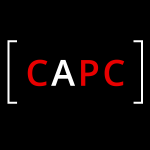Every week in The Kiddy Pool, Erin Newcomb confronts one of many issues that parents must deal with related to popular culture.
According to a Wired Magazine article that appeared right before the premiere of Will Smith’s new movie After Earth, the Smith family has collectively saved 63,648,098,766 people. The Smiths are a celebrity family in reality and a superhero family in fiction. I don’t doubt that, privately, their family bears other identities as well. The Wired piece got me thinking about the ways that we define our family cultures, publicly and privately, and why we choose the metaphors we use. The Smith family’s public persona is characterized by action films: fun summer blockbusters with big special effects and big box office sales. That family image is quite different from, say, the Kardashians’ focus on relationship drama and conspicuous consumption. Our families define us, and we define them, mapping out a microcosm of our vision of the world, its paths, and its qualities. Those of us who grow up in families where we fit the metaphor’s mold can feel a sense of belonging and purpose, and a certainty about our roles as we move into the community and the world.
One way that Christianity strives to incorporate its diverse members (whom it calls brothers and sisters), giving each one a sense of belonging and a purpose, is through the metaphor of the body. The Church ought to exist as a singular organism with discrete parts, each with its own essential function. It’s a less individualistic metaphor than a superhero, and (at least in my experience) there tends to be fewer aliens and robots to grapple with. The Church, in its ideal form, recognizes the unique giftedness of each individual believer and each human’s reflection of God’s image without sacrificing the communion of saints. We need each other and we are needed by others. And while we might not be saving the world in the Smith family’s dramatic fashion, we are called to love it — which can be no small feat. Just as the family teaches children how to navigate the world, the Church instructs its members how to move within the religious community and beyond it. Our communal metaphors help us make maps. Whether we accept or reject the metaphors offered to us, they influence our behavior and our perceptions of the world, and the kinds of saving that world needs.
I am not sure there are any superheroes in my little family unit. I realize that family itself is a metaphor, one that changes across time and place and culture to include different groups and kinds of people. My husband and I easily fall into the metaphor of our family as a team — less individualistic than superheroes (though that seems to work for the Smiths) and less organic than the body. There’s a hierarchy, with my husband and I as co-captains or coaches of a sort, who try to balance the needs of the unit with the gifts and goals of its individual members. It also, like any metaphor, expresses some of our deepest values, like togetherness and cooperation. Yet even kinds of teams are different, and a track team with runners and jumpers and throwers is much more individuated than a basketball team. There are metaphors within metaphors, each as value-laden as the next. I’ve started thinking more about our use of teamwork, what it represents, where it leads us, and who it reflects — and I wonder how our family metaphor will grow and change along with us. Maybe, like the Smiths, we too will be called to save humanity from certain sci-fi doom. Meanwhile, what’s your family metaphor?











